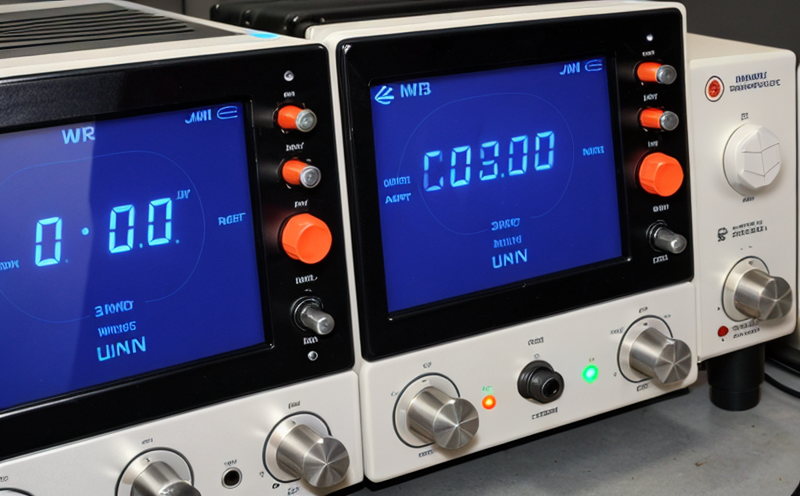FCC Part 95 Personal Radio Services IoT RF Testing
Understanding the regulatory landscape is crucial when developing and deploying wireless communication devices for consumer use. The FCC (Federal Communications Commission) regulates these services under Part 95, which includes Personal, Family, and Utility Radio Services. This service focuses specifically on testing IoT devices that operate within this framework.
Personal Radio Services allow individuals to communicate using unlicensed frequencies without the need for a license from the FCC. These services are used in various applications such as two-way radios, remote control toys, and other low-power wireless devices. The primary goal of our testing service is to ensure compliance with Part 95 requirements while also evaluating the performance characteristics essential for seamless communication.
The testing process involves several key steps: initial consultation, equipment calibration, signal strength measurement, interference analysis, and final report generation. Our team works closely with you to understand your specific needs and tailor our services accordingly. We use state-of-the-art instrumentation to conduct these tests in controlled environments that replicate real-world conditions.
One of the most important aspects of FCC Part 95 testing is ensuring that your device does not cause harmful interference to other licensed or unlicensed devices operating within the same frequency bands. This includes testing for spurious emissions, adjacent channel power ratio (ACPR), and out-of-band radiation. By adhering strictly to these parameters, we help you avoid potential fines or recalls.
Another critical aspect is ensuring that your device operates reliably over the intended range while consuming minimal power. We measure transmit power levels, frequency stability, and signal quality indicators like Signal-to-Noise Ratio (SNR) and Error Vector Magnitude (EVM). These metrics provide valuable insights into how well your device performs under various conditions.
Our team also ensures that the design meets all applicable standards set forth by organizations such as ANSI, IEEE, and ETSI. Compliance with these standards not only helps in passing regulatory checks but also enhances product safety and interoperability across different networks. Additionally, we provide recommendations for improvements based on our findings during testing.
Compliance with FCC Part 95 is essential for manufacturers aiming to bring innovative IoT products to market quickly without compromising quality or legal requirements. By leveraging our expertise in this area, you can be confident that your product will pass all necessary certifications and be ready for launch.
| Standard | Description |
|---|---|
| FCC Part 95 | Regulates personal, family, and utility radio services. |
| ANSI C63.4-2018 | Defines measurement procedures for RF power output of low-power unlicensed devices. |
| IEEE 802.15.4 | Standardizes the physical and MAC layers for wireless personal area networks (WPANs). |
Applied Standards
- FCC Part 95: This regulation ensures that devices comply with the power limits and emission levels specified for personal radio services.
- ANSI C63.4-2018: This standard provides guidelines on how to measure the RF power output of low-power unlicensed devices, which is crucial for ensuring compliance with FCC Part 95.
- IEEE 802.15.4: This standard defines the physical and MAC layers for wireless personal area networks (WPANs), providing a framework for interoperability among different IoT devices operating within this frequency range.
Benefits
Compliance with FCC Part 95 is not just about meeting regulatory requirements; it opens up numerous opportunities for growth and innovation in the market. By ensuring that your IoT devices meet these stringent standards, you can:
- Avoid costly delays due to non-compliance or rework.
- Gain a competitive edge by being one of the first companies to bring cutting-edge IoT solutions to market.
- Earn consumer trust and satisfaction through reliable performance and safety features.
- Ensure long-term sustainability by designing products that are energy-efficient and environmentally friendly.
International Acceptance and Recognition
FCC Part 95 testing is widely accepted globally, especially in countries where the regulatory environment closely follows US standards. The recognized entities include:
- European Telecommunications Standards Institute (ETSI)
- International Electrotechnical Commission (IEC)
- Joint Technical Committee 1 (JTC1) of ISO/IEC
- Wireless Innovation Forum
The widespread acceptance of these standards ensures that your product will not only meet US requirements but also perform well in international markets. This opens up new avenues for expansion and collaboration with global partners.





